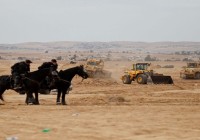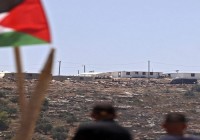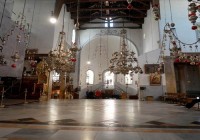H.E. Dr. Awad, highlights the Palestinian children's situation on the Occasion of the Palestinian Child Day
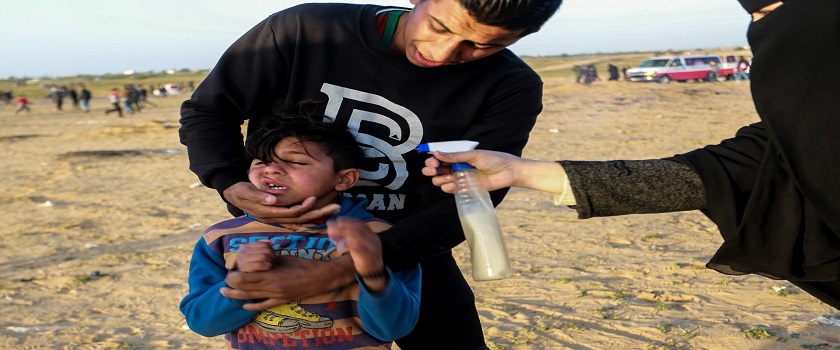
Palestine Economy Portal
Palestinians celebrate the Palestinian Child Day on the fifth of April each year. They celebrate the builders of the country, its greatest resource, and the wealth of the future. This day is about setting a new vision for a better future for every child.
Almost half of the Palestinian society are children
The estimated number of children (under 18 years) is 2.31 million in Palestine in mid 2021, with 1.18 million males and 1.13 million females. Children in Palestine comprise 44.2% of the total population (42.0% in the West Bank, and 47.5% in Gaza Strip).
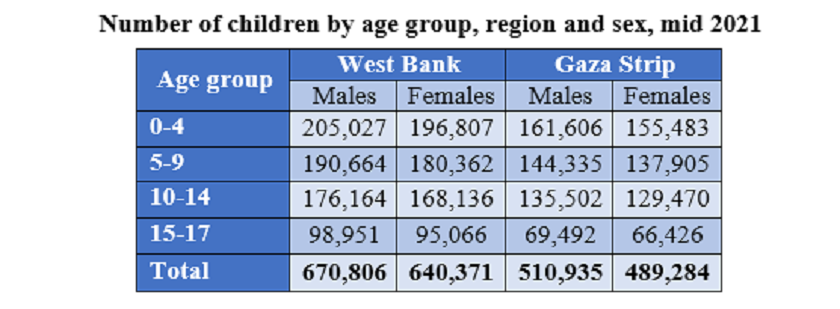
One out of five registered marriage contracts are for females under 18 years
There is a decline in the percentage of early marriage (for those under the age of 18) for both sexes, where it reached 19.3% of the females registered marriages in 2019 (19.0% in the West Bank and 19.9% in Gaza Strip) out of the total number of females registered marriages in the same year compared with 24% in 2010. Whereas this percentage reached 0.9% of the males registered marriages out of the total number of males registered marriages in the same year compared to 2% in 2010.
About 13% of females in the age group 20-24 years were married before completing 18 years old
The data of the Palestinian Multiple Indicator Cluster Survey (PMICS6) 2019-2020 indicated that 13.4% of women aged 20-24 years were married before reaching the age of 18; (11.4% in the West Bank and 16.5% in Gaza Strip), knowing that a presidential decree was issued at the end of 2019 prohibiting the marriage of males and females under 18 years. This decree was put into action and applied at the beginning of 2020. Therefore, data presented here on early marriage included in this press release shows the years prior to 2020.
Dropout rates are low in Palestine
The primary data for the scholastic year 2019/2020 showed that the number of school students in Palestine reached about 1.309 million students, out of which 1.061 million were students in the basic stage (50.7% males and 49.3% females), 248 thousand students in the secondary stage (45.0% males and 55.0% females).
The dropout rate in the scholastic year 2018/2019 was about 0.9% among males compared to 0.6% among females, while the repetition rate among males was 0.9% compared to 0.7% among females for the same scholastic year.
The data for the year 2019 showed that the percentage of children at the age of 7-14 years enrolled in the basic stage[1] who have basic reading skills was about 53%; (58.0% in the West Bank and 47.0% in Gaza Strip) about 48% among males and about 57% among females. While data showed that the percentage of children enrolled in the basic stage who presented basic numeracy skills was about 46% for both sexes (53.7% in West Bank and 36.6% in Gaza Strip).
Variation in students’ participation in online education during the Lockdown period (March - May), 2020 due to the COVID-19 (Coronavirus) pandemic
51.0% of households in Palestine with children (6-18 years) and enrolled in education before the lockdown, thier childern particpated in eductional activities (online education) during the lockdown; (53.3% in the West Bank and 48.5% in Gaza Strip). Also, there is a clear variation between the different governorates in terms of students participation, where the highest participation was in Jerusalem Governorate (84.8%) and the lowest was in Hebron Governorate (38.9%).
Unavailability of internet is considered a reason for the deprivation of the children of about half of the households from participating in online education during the lockdown period (March - May), 2020 due to the COVID-19 (Coronavirus) pandemic
48.5% of households pointed out that the unavailability of intenet in the household prevented their children from participating in the online educational activities during the lockdown period, while 21.6% of them did not participate due to the fact that the teachers did not perform/conduct any educational activities, and 13.3% of them did not participate due to the fact that the child him/herself did not want to carry out nor perform online educational activities.
A decline in child and infant mortality rates.
The under-five child mortality rate in Palestine was 14 per 1000 live births during (2015-2019); 15 in the West Bank and 14 in Gaza Strip. On the other hand, infant mortality rate in Palestine reached 12 per 1000 live births in the same period (12 in the West Bank and 13 in Gaza Strip).
An increase in the percentage of children under the age of five who suffer from stunting and underweight
8.7% of children under the age of five years in Palestine in 2019 suffer from moderate and severe stunting. The percentage was 8.5% in the West Bank and 9.0% in Gaza Strip. When comparing this percentage to 7.4% in 2014, it is clear that there is an increase of 17.6% in 2019.
2.1% of children under the age of five years in Palestine in 2019 suffer from being underweight, with no difference between the West Bank and Gaza Strip (2.1%). This percentage increased at 50% in comparison
With the year 2014 which was 1.4%
1.3% of children under the age of five years in Palestine in 2019 suffer from wasting. The percentage was 1.7% in the West Bank and 0.8% in Gaza Strip. This percentage has remained steady as compared to 2014, where it reached 1.2%.
Disability among children in the age group (10-17) years in Gaza Strip is higher than in the West Bank
The Labor Force Survey 2020 database indicated that 1.2% of children in the age group (10-17) years have at least one type of disability (1% in the West Bank and 1.4% in Gaza Strip), and 1.5% of male children compared to 0.8% of female childern.
2.3% of children in Palestine are orphans
2.3% of children aged (0-17 years) were orphans (had lost one or both parents): 2.0% in the West Bank and 2.7% in Gaza Strip. Whereas 2.2% of children (0-17 years) live with their mothers only, and their fathers are alive, 2.7% in Gaza Strip, compared to 1.8% in the West Bank. While the percentage of children living with the father and their mothers alive was 1.0% in Palestine; by 0.6% in the West Bank and 1.5% in Gaza Strip according to the data for the year 2019.E
Female children follow the correct developmental path more than male children
Data of 2019 indicated that 83.9% of children of the age (3-4 years) are on the right path towards development and growth, 84.2% in the West Bank and 83.4% in Gaza Strip.As for gender, the percentage of female children (3-4 years) who are on the right developmental path is 86.2% compared to 81.7% for male children.
As for type of locality, it was 84.2% for urban children, 82.8% for rural children, and 82.1% for camp children.
Early Childhood Development Index by Background Characteristics, 2019
The analysis of the four areas of child development shows that 98.8% of children follow the correct path in the physical field, and that about 92.8% of children follow the correct path in the field of learning, while in the field of literacy - the principles of arithmetic, the percentage was 38.4%, and in the field (social - emotional) it reached 81.9%.
The early childhood development index is 90.9% among children at the age of 4 years, compared to 77.8% among children at the age of 3 years. This is because children master more skills with age. A high level of early childhood development index is seen among children who attend kindergartens (pre-school education) by 92.1% compared with 79.5% for those children who did not attend kindergartens.
Early Childhood Development Index by Age / Enrolled in education, 2019
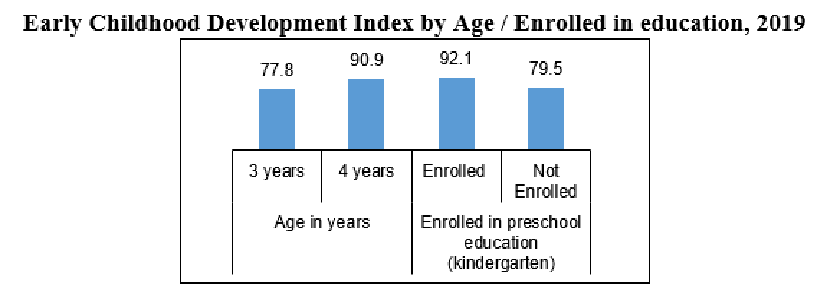
140 children are detained in the Israeli prisons
The data of the the Commission of Detainees and Ex-Detainees Affairs indicated that the number of Palestinian prisoners and detainees in the occupation prisons reached about 4,500 prisoners by the end of January 2021, including 140 children, equivalent to 3.1% of the total number of prisoners. As they are still in detention, they are deprived of their childhood, including continuing their studies, in addition to being subjected to violations during arrest, which violates the rules of international law and the Convention of the Rights of the Child.
9 martyrs were children in 2020
According to the records of the Defense for Children International - Palestine (DCIP), 9 children were martyred in 2020 compared to 28 child martyrs during 2019.
Less than one-fifth of the Coronavirus cases in Palestine are among children (18 years or less)
The percentage of children (18 years or less) who were infected with Coronavirus in Palestine up to 30/03/2021 reached 14.1% of the total number of infected people in Palestine[2], (50.8% of them are males and 49.2% of them are females). By distributing them according to age groups, 52.7% of them are in the age group (13-18) years, 30.4% are (6-12) years, and 16.9% are (0-5) years.
Percentage Distribution of Infected children (18 years or less) with COVID-19 in Palestine by Age group and Sex, up to 30/03/2021
[1] From the scholastic year 2017/2018, the basic stage includes grades from 1st to 9th while secondary stage includes grades 10th ,11th and 12th, based on the new education law issued by the Ministry of Education that considers the tenth grade in secondary stage.
[2] : Data excluded those parts of Jerusalem which were annexed by Israeli occuoation in 1967.
